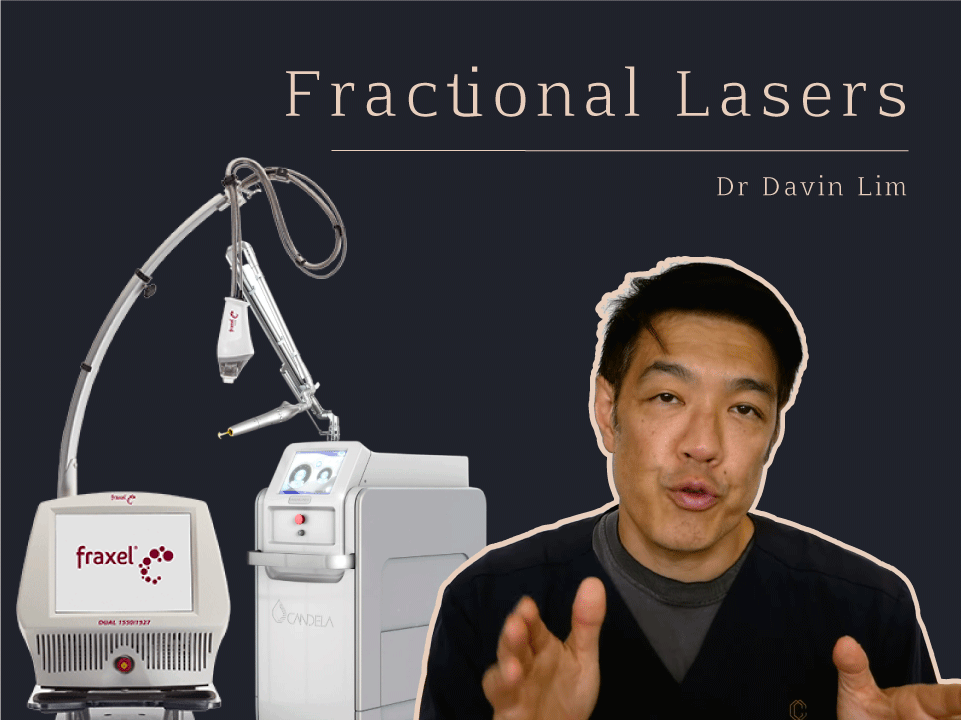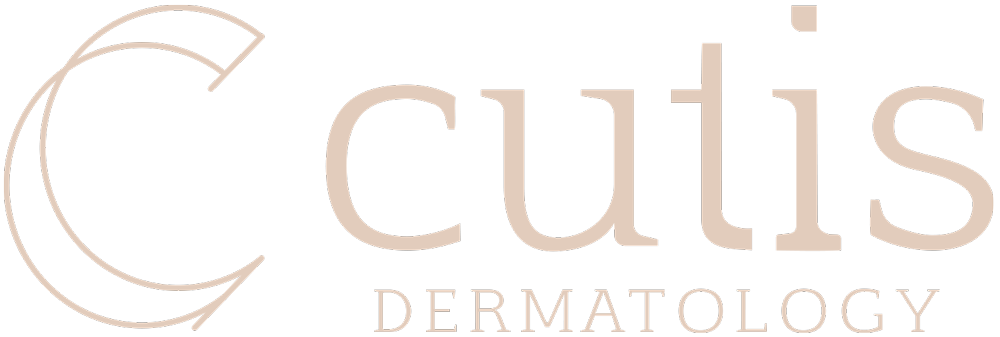Fraxel 1927 fractional laser resurfacing high density, is a novel treatment for solar keratosis/sunspots. It has clearance rates similar to more traditional treatments including photodynamic therapy, Efudix & Aldara. This laser has two main advantages- fast healing & added skin rejuvenation.
Key Points
- Solar keratosis are precancerous lesions. The transformation to cancer is about 1%.
- Topicals including Efudix will give clearances of over 75%, with a recovery time of 4-7 weeks
- Fraxel laser, performed by dermatologists will give similar results
- Healing from laser resurfacing is one week
- This treatment is ideal for those who are active or who would prefer less downtime
- 95% of patients undertake only one session
Fraxel for Sun Spots at a Glance
Our results speak for themselves
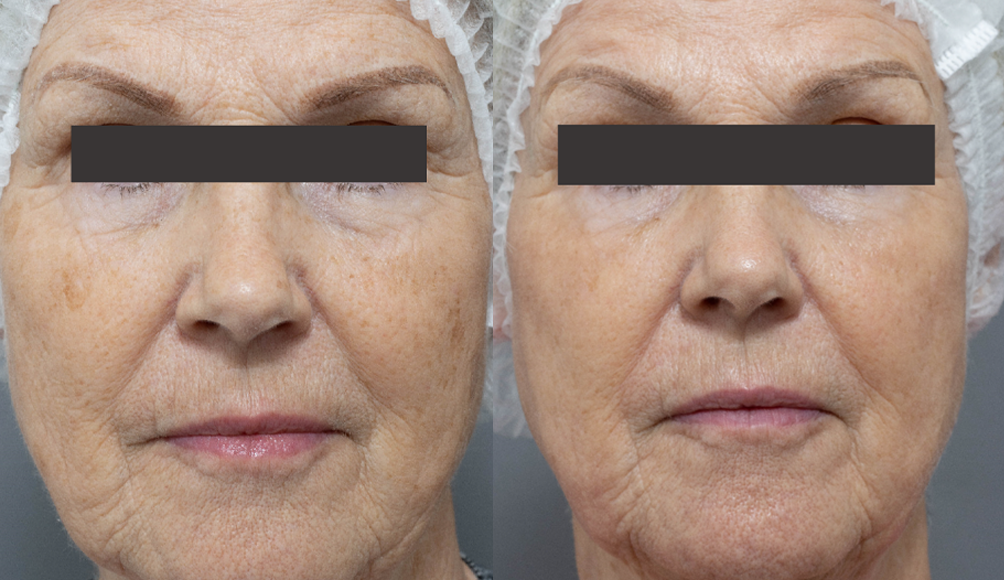
Before
After
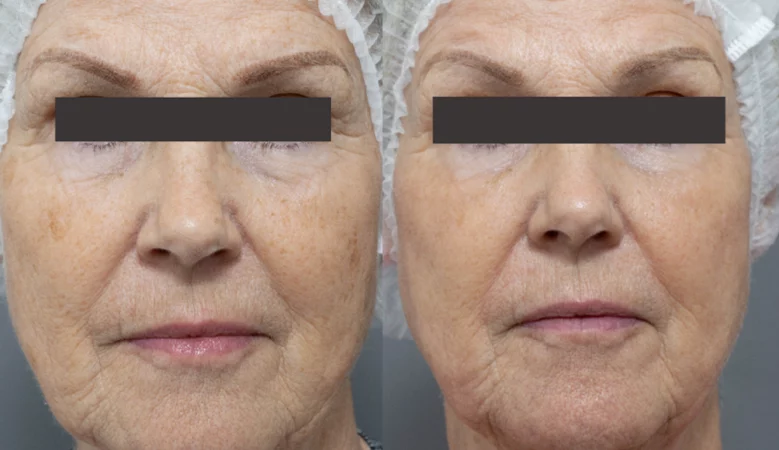
Thulium 1927 Fraxel + Q switch nano laser. One session only, 5-day recovery. Classed as medium-light resurfacing
Ask us more about this treatmant
Preferred Consultation
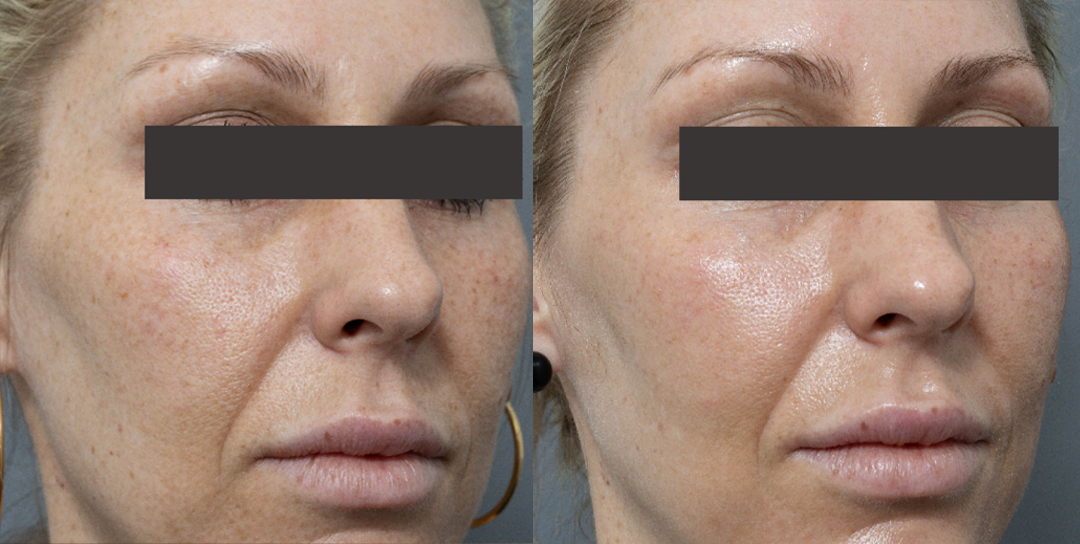
Before
After
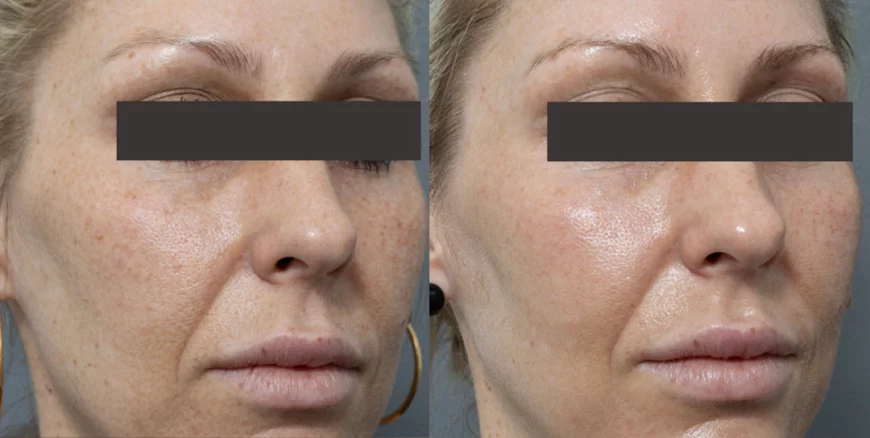
Thulium 1927 Fraxel. Light settings, 2 sessions
Ask us more about this treatmant
Preferred Consultation

Before
After
Fractional thulium laser, 1 session using Fraxel. 5.5 day recovery time
Ask us more about this treatmant
Preferred Consultation
FAQs
What is Fraxel?
Fraxel is a form of fractional laser resurfacing. This laser has a long safety record span over 15 years. The Fraxel Dual 1927 thulium wavelength is the best for treating sunspots / solar keratosis.
The procedure is performed by clinicians in our laser theatres at Cutis. The procedure itself takes 30 minutes to complete.
What (other) skin conditions does Fraxel laser treat?
Fractional lasers have a myriad of jobs. They are useful in treating-
- Pigmentation, age spots, sunspots
- Wrinkles, pores, textural changes
- Scars including acne, surgical & burns
- Skin laxity (collagen contraction)
There are 3 main wavelengths in the Fraxel family. 1927 is best for sunspots & superficial conditions, 1550 for scars, & 10600 CO2 for wrinkles & rejuvenation.
How is Fraxel HD different from normal Fraxel?
The normal density or surface area treated with Fraxel is 30-70%. This means there are many skip segments. With more passes, we reach a density of between 85-92%. This single treatment is much more effective than lower density laser.
Downtime following HD treatments are only extended by 24 to 36 hours as the laser is non-ablative.
How does it work?
Fraxel delivers non-ablative laser wavelengths that target water in the upper layers of skin. This destroys the upper skin cells with laser desiccation & heat, in turn killing off abnormal cells. *
As this laser is non-ablative (meaning the upper layer of skin is intact), it has a fast-healing time- typically 5-6 days.
*Simple explanation. Clearance rates due to many other factors including cytokine mediated bystander effect. Namely damaged cell release mediators that inform other cells to undergo apoptosis or cell death.
What is the advantage of Fraxel for sunspots as compared to creams?
Recovery time. Efudix & Aldara require 4-12 weeks of application. Fraxel laser is over in 30 minutes. By the time you heal up from Fraxel, the Efudix patient is just starting their treatment.
If you are retired or have lots of downtime, Efudix & Aldara may be more feasible treatments. If you are working, possibly laser treatments are more efficient. Lasers have the added benefits of skin rejuvenation.
What are other ways to treat sun spots?
There are over half a dozen ways to effectively manage sunspots. The optimal treatment depends on your downtime, clinical presentation, location of sunspots, & budget.
As a guide –
- Efudix: most cost-effective treatment, hampered by long recovery time- up to 4-7weeks.
- Aldara– good for sunspots & solar keratosis, flu like symptoms common.
- Solaraze– not that great, but very gentle.
- Ablative lasers: Best for sunspots & deep wrinkles. Long recovery time.
- Medium to deep Jessner TCA / phenol peels, excellent treatment, 8+ days recovery.
- PDT or photodynamic therapy. Good, expensive, painful with longer recovery than Fraxel.
Your testing dermatologist will discuss options with you during the consultation.
Will Fraxel remove every sunspot?
No. The clearance rate approaches 80%. Whatever is left can be treated with PDT, nitrogen or if required another session of laser (rarely needed).
Fraxel will not treat-
- Seborrheic warts (can be treated with CO2)
- Basal cell carcinoma (PDT or excision)
- Other nasty cancers
- Suspicious lesions may require a biopsy
What are the added benefits of Fraxel HD for sunspots?
Fraxel was first used as a skin rejuvenating laser, namely, to improve skin quality, pores, wrinkles, age spots & dull skin. Unfortunately, after Fraxel, your skin will look & feel 5-10 years younger.
Products

O Cosmedics cleansing range
$63.00-$64.00

O Biotics 3D Hyaluronic Serum
From $97.00
Fractional laser provides a highly effective method of clearing sun damage including solar keratosis with minimal downtime. Lasers have added photo rejuvenating properties that reverse skin aging.
How long does the results last for?
2-5 years, which is similar to Efudix therapy & photodynamic therapy. Remission time depends on-
- Genetics
- Previous sun damage
- Current sun exposure
- Level of photoprotection
- Immunosuppression
How does Fraxel compare with PDT/Photodynamic therapy?
In studies, the results are comparable with similar clearance & remission rates.
PDT is more painful, & costs more- unless you have DVA cover. DVA covers all costs of PDT, but not Fraxel lasers.
Is the treatment painful?
Treatment is tolerable. We use high strength numbing gel 60 minutes before. We also use a cooler & laughing gas if required.
After the Fraxel treatment there is no pain.
What is recovery like?
Uneventful. You will be red & slightly swollen for 16-24 hours
- At 24-48 hours your skin will be darker
- Peeling starts at day 3 till day 5
- Peeling stops at day 6
- Skin is back to normal at day 6-7, albeit red in some
As a comparison, for Efudix therapy, skin starts to be inflamed at week one, & continues for 4-7 weeks.
What are the potential side effects?
Side effects are extraordinarily rare. They include –
- Infection, especially cold sores. If you have a history of cold sores you must take antivirals on the day of the laser.
Redness. Lasers can flare up rosacea, or rarely induce it.
Can anyone have Fraxel HD?
No. This laser is best for lighter skin colors.
If you suffer from rosacea, your dermatologist will reduce skin inflammation before, during & post laser.
If you have cold sores, antivirals are required on the day of the laser for 5-7 days post.
What to know more about Fraxel?
You can book with our experienced nursing team for a *FREE consultation.
Alternatively, book a consultation with our dermatologists**.
*Conditions apply
**Consult fee applies.

